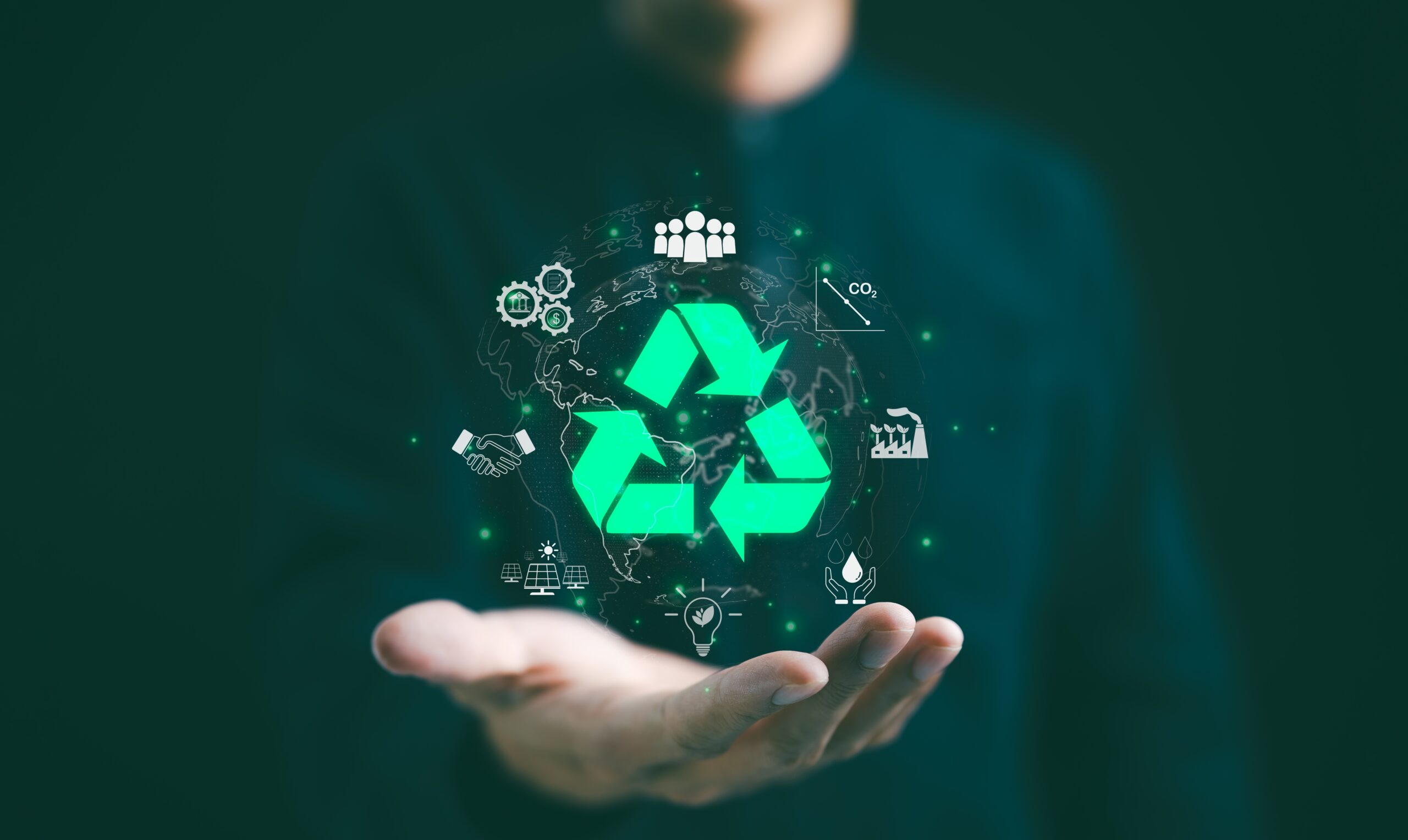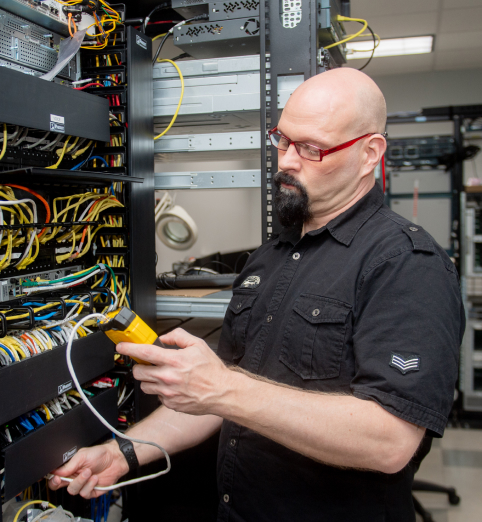Sustainable IT Practices: How Your Business Can Make a Difference
Sustainable IT has evolved into a component of corporate responsibility, making it essential for businesses to integrate environmentally conscious practices into their daily operations. While many organizations prioritize various aspects of their operations, sustainable IT often falls under the radar. A significant number of C-suite executives remain unaware of their environmental IT footprint and the growing concerns surrounding corporate e-waste. Sustainable IT practices not only reduce an organization’s environmental impact but can also lead to cost savings, enhance brand reputation, and help to streamline IT operations more efficiently. We’ll dive into the importance of sustainable IT practices and outline actionable steps your business can take to Make The Most Of IT.
The Importance of Sustainable IT Practices
Office devices like laptops and monitors, paired with the energy demands of data centers, play a significant role in global carbon emissions due to their substantial energy consumption and the resulting e-waste. These devices require significant energy during manufacturing, and once deployed in offices, additional energy is needed for daily operations. As an IT company, we understand the extensive energy consumption involved, but many organizations lack the expertise or resources to improve energy efficiency and streamline their IT operations. This lack of efficiency, combined with the rapid obsolescence of electronic devices, contributes to a growing accumulation of e-waste, which poses serious environmental and security risks if not properly managed.
Adopting sustainable IT practices can help mitigate some of these issues by:
- Reducing Carbon Footprint: Implementing energy-efficient technologies and optimizing data center operations can significantly lower energy consumption and carbon emissions. Replacing traditional servers with high-efficiency models can decrease energy consumption by up to 30%.
- Minimizing E-Waste: Consolidating underutilized equipment, such as a server that is not running near full capacity, can reduce the number of devices in operation and decrease energy consumption. Additionally, deduplicating software can clear up storage space, helping your business store data more efficiently. By consolidating equipment and software, your business can repurpose and recycle outdated hardware.
- Reusing & Refurbishing for the Circular Economy: Promoting the reuse, refurbishment, and recycling of IT equipment can reduce the volume of e-waste and its associated environmental impact. This approach can also lead to substantial cost savings by utilizing hardware that remains fully functional and capable of meeting your business’s needs.
- Enhancing Brand Image: Setting a net-zero emission goal for your business to offset its carbon footprint and achieve long-term sustainability can enhance your brand’s image. Holding your business accountable for its sustainability initiatives contributes to a positive brand reputation.
- Cost Savings: Energy-efficient technologies and sustainable practices often lead to reduced operational costs and improved bottom lines.
Actionable Steps for Adopting Sustainable IT Practices
Incorporating sustainability into your IT operations involves a variety of strategic initiatives. The following actionable steps outline ideas that can help your business reduce its environmental impact, enhance operational efficiency, contribute to a more sustainable future, and save on costs!
- Optimize Data Center Operations
- Energy-Efficient Hardware: Invest in energy-efficient servers, storage devices, and networking equipment. Look for certifications like ENERGY STAR, which signifies energy-efficient features and power supply efficiency, helping some companies cut energy usage by over 50%!
- Cooling Optimization: Utilize advanced cooling techniques such as free cooling, liquid cooling, and hot/cold aisle containment to reduce energy consumption. Regularly maintain cooling systems to ensure they operate efficiently. These measures prevent cold air from mixing with hot exhaust air, which helps maintain a consistent temperature, reduces energy consumption, and extends the lifespan of your equipment.
- Adopt Green IT Policies
- Sustainable Procurement: Develop a procurement policy that prioritizes environmentally friendly products. This includes selecting vendors with strong ISO credentials and choosing products designed for longevity and recyclability. Consider sourcing hardware from the secondary market, as it offers dependable and reliable equipment that extends the lifecycle of hardware. Just because equipment has reached End of Life (EOL) or is no longer officially supported by the OEM does not mean it’s no longer usable. Many of these devices continue to perform reliably in various environments and can be maintained with third-party support services or through in-house expertise.
- E-Waste Management: Implement a comprehensive e-waste management strategy that includes the reuse, refurbishment, and recycling of IT equipment. Partner with trusted ITAD (IT Asset Disposition) company to ensure responsible and secure disposal. At Inteleca, our team can often find hidden value in assets, landing your company a check and savings!
- Paperless Office: Promote digital workflows and reduce paper consumption by adopting electronic document management systems and encouraging employees to minimize printing.
- Promote Remote Work and Telecommuting
- Flexible Work Arrangements: Encourage remote work and telecommuting to reduce the environmental impact associated with commuting. Provide employees with the necessary tools and technologies to work effectively from home. This approach not only supports sustainability but also ties directly into efficient IT asset management, as it involves deploying laptops and other equipment to employees and ensuring their return for maintenance, upgrades, or repurposing.
- Virtual Meetings: Utilize video conferencing and collaboration tools to minimize the need for business travel. This not only reduces carbon emissions but also saves time and costs.
- Implement Energy Management Systems
- Energy Monitoring: Deploy energy monitoring systems to track and analyze energy consumption patterns. Use this data to identify inefficiencies and implement corrective measures.
- Educate and Engage Employees
- Sustainability Training: Provide training and resources to educate employees about the importance of sustainability and how they can contribute. Encourage them to adopt energy-saving practices, such as turning off equipment when not in use.
- Green Initiatives: Create employee-led green initiatives and sustainability programs. There are many local community programs that clean roadways, plant trees, and hold designated days of service focused on environmental stewardship. Encouraging employees to participate in these activities not only supports the community but also fosters a culture of sustainability within your organization.
- Lifecycle Management of IT Assets
- Regular Audits: Conduct regular audits of IT assets to ensure they are being used efficiently. Identify underutilized or obsolete equipment that can be repurposed or disposed of sustainably.
- Leasing Options: Consider leasing IT equipment instead of purchasing it outright. Leasing allows for easier upgrades to more energy-efficient technology and reduces the burden of disposing of outdated equipment.
- End-of-Life Management: Develop a strategy for managing the end-of-life phase of IT assets. This includes secure data destruction, responsible recycling, and exploring options for donating or selling used equipment. We recommend partnering with an ITAD company to handle the logistics.
- Green Certifications and Standards
- LEED Certification: Aim for Leadership in Energy and Environmental Design (LEED) certification for your data centers and office buildings. LEED certification recognizes buildings that meet high environmental performance standards.
- ISO 14001: Implement ISO 14001, an international standard that specifies requirements for an effective environmental management system (EMS). Achieving ISO 14001 certification demonstrates your commitment to sustainability and continuous improvement in environmental performance.
Inteleca’s Initiatives and Success Stories
At Inteleca, sustainability is at the core of our operations. We believe that technology and sustainability can coexist, and we strive to lead by example. Here are some of the initiatives and success stories that demonstrate our commitment to sustainable IT practices:
- IT Asset Disposition (ITAD) Events: Inteleca hosts quarterly IT Hardware Recycling events aimed at reducing e-waste in the community. Businesses can bring in their old laptops, monitors, switches, or other equipment, and our team will securely remove, sanitize, or recycle your equipment. After the event, we send your company a certificate of data destruction or recycling. By refurbishing and recycling these items, we help extend their lifecycle and reduce the environmental impact of e-waste.
- Sustainable Procurement Practices: We specialize in sourcing and deploying equipment from the secondary market, with a vast inventory that caters to businesses of all sizes, from small enterprises to Fortune 500 companies. All hardware is thoroughly tested, refurbished, and configured to meet our clients’ specific needs. We collaborate closely with our clients throughout the entire IT Asset Lifecycle—from deployment to disposition—ensuring secure and sustainable handling of hardware at every stage.
- Community Involvement Inteleca is an active member of Keep Smyrna Beautiful, an organization dedicated to cleaning and beautifying the roadways in our city. Our involvement in such community initiatives underscores our commitment to environmental stewardship and corporate social responsibility.
How Will Your Business Incorporate Sustainable Initiatives?
Sustainable IT practices are not only essential for reducing corporate e-waste but can also save your business money in the long term while increasing the efficiency of IT asset and operations management. By optimizing data center operations, adopting green IT policies, and purchasing from the secondary market, businesses can make a meaningful difference.
Inteleca’s initiatives and success stories serve as a testament to the positive impact that sustainable IT practices can have. As we continue to innovate and improve our own initiatives, we invite other businesses to join us in our commitment to sustainability. Together, we can create a more sustainable and greener future for all. Let’s Make The Most Of IT together.



